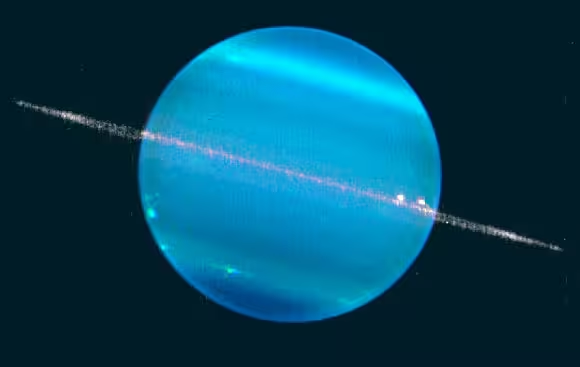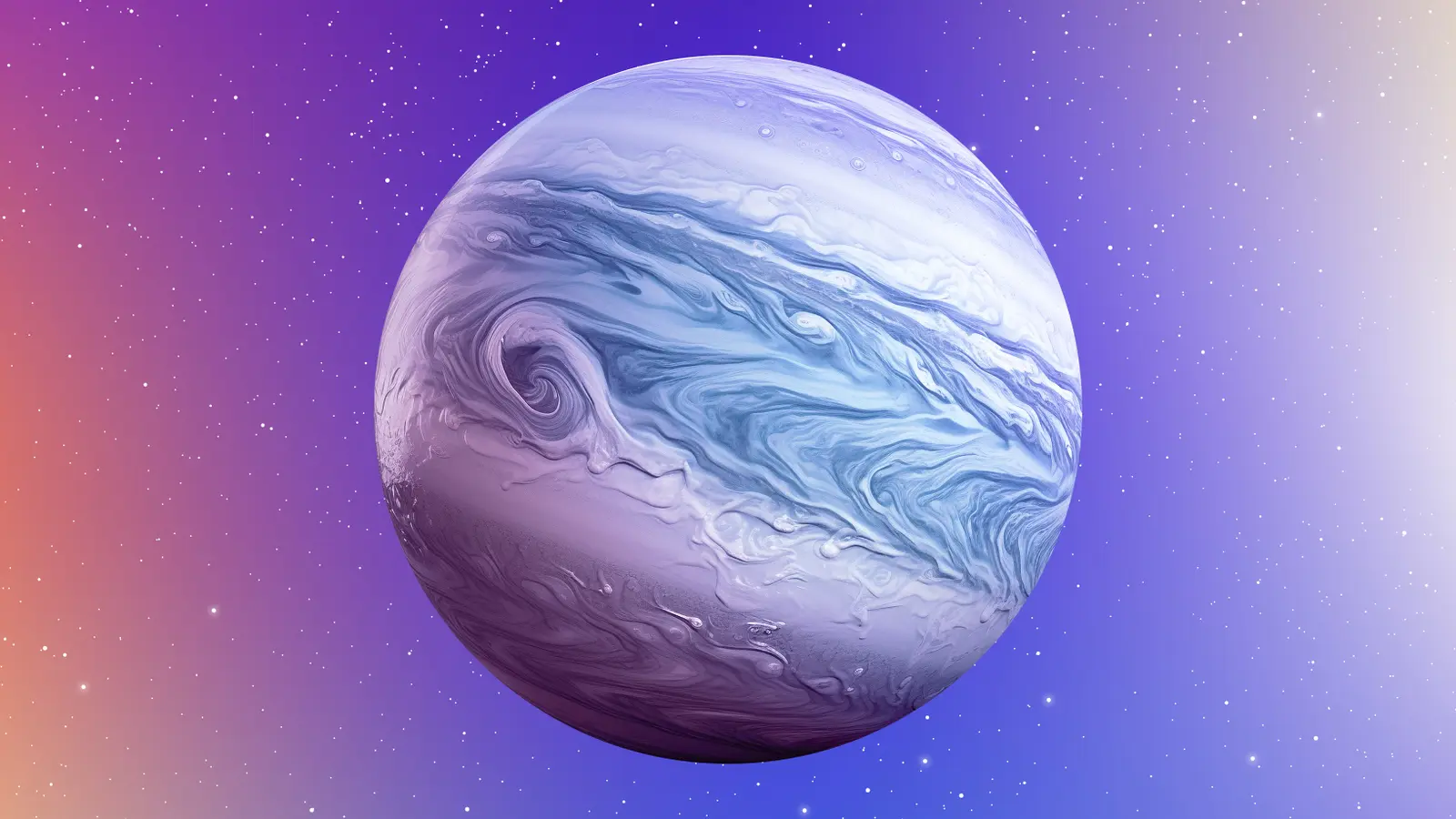6 Minutes
Uranus’ thermal mystery: a planet unlike the others
Uranus stands out in the Solar System: it rolls on its side so each pole faces the Sun for roughly 42 Earth years, and it rotates in a retrograde sense like only Venus does. For decades, scientists believed Uranus released almost no internal heat — a conclusion largely based on the solitary close-range measurement from NASA’s Voyager 2 flyby in 1986. That finding challenged conventional models of planetary formation and evolution, because the other giant planets (Jupiter, Saturn and Neptune) emit significantly more energy than they absorb from the Sun, implying a residual internal heat source.
The idea that Uranus might be essentially thermally dead prompted competing hypotheses. Some researchers argued the planet cooled faster and could be much older in thermal terms; others suggested a massive ancient collision (possibly the same event that tipped Uranus onto its side) might have stripped away deep heat. Both explanations raised further questions about how giant planets transport and retain heat over billions of years.
Revisiting Uranus’ energy budget with modern observations and modeling
To resolve the discrepancy, a team led by University of Oxford and NASA scientists revisited decades of observations and developed an advanced radiative‑transfer and reflectivity model that synthesizes data from ground- and space-based observatories, including the Hubble Space Telescope and NASA’s Infrared Telescope Facility (IRTF) in Hawai'i. Their goal was to produce the most complete estimate yet of Uranus’ energy budget: the balance between sunlight absorbed, sunlight reflected (albedo), and thermal energy emitted.
A planet’s internal heat flux is inferred by subtracting the solar energy it reflects and re-emits from the total outgoing energy. A key difficulty is accurately measuring the light scattered at high phase angles — the light thrown off to the sides rather than directly back to an observer. The new model incorporates Uranus’ complex atmospheric layers, hazes, clouds and seasonal variability, allowing a better estimate of total reflected light across all viewing geometries.
The authors report that Uranus emits roughly 15% more energy than it absorbs from the Sun. While this intrinsic heat is modest compared with Neptune (which radiates more than twice the solar power it receives), it overturns the long-held assumption that Uranus had effectively no internal heat source. As Dr. Amy Simon of NASA’s Goddard Space Flight Center, a co‑author on the study, noted, the Voyager-era conclusion relied heavily on one data point — and the new synthesis gives a broader, more nuanced picture of Uranus’ thermal state.

Key discoveries, implications and remaining questions
The revised energy budget has several important implications for planetary science. First, Uranus’ small but real internal heat helps align it more closely with models of giant-planet cooling and evolution: rather than being a complete outlier, it now appears to occupy an intermediate thermal class between Neptune and the more luminous gas giants. Second, the finding constrains scenarios for the planet’s early history. If internal heat was not catastrophically lost, the giant-collision hypothesis may need refinement about how energy redistribution and insulation operate after an impact.
However, the magnitude and distribution of Uranus’ internal heat remain uncertain. Is the heat coming from gradual cooling of the core, from residual differentiation, or from slow-release processes in the deep interior? How do Uranus’ extreme axial tilt and long seasons affect atmospheric circulation and heat transport? Answering these questions will require improved thermal maps, higher-precision infrared observations, and, ideally, a dedicated Uranus orbiter or probe.
Mission context and future prospects
Voyager 2 remains the only spacecraft to visit Uranus closely, but modern telescopes have gathered decades of complementary data. Upcoming observatories and possible future missions could measure Uranus’ emitted infrared spectrum more precisely and map spatial variations in heat flux. A spacecraft equipped with a radio science experiment, microwave radiometer and infrared spectrometer could directly probe the planet’s interior heat flow and atmospheric dynamics — crucial data for testing formation and evolution models of ice giants.
Expert Insight "The new estimate that Uranus emits a modest intrinsic heat is a meaningful step forward," says Dr. Elena Morales, a planetary physicist at the Lunar and Planetary Laboratory (fictional). "It reframes questions about ice‑giant thermodynamics: instead of asking why Uranus has no heat, we now ask how a reduced but nonzero heat flux shapes its long-term evolution. Precise infrared and microwave observations will be the next leap forward."
Conclusion
Updated modeling and a synthesis of decades of telescope data indicate Uranus emits about 15% more energy than it receives from the Sun, implying a modest internal heat source. This result softens Uranus’ status as a thermal anomaly among the giant planets and refocuses scientific questions on how residual heat is stored, transported and revealed in the atmospheres of ice giants. To fully resolve Uranus’ thermal history and interior structure, the planetary science community will need improved remote sensing and, ultimately, return missions that can measure heat flow and deep atmospheric composition directly.
Source: sci


Leave a Comment